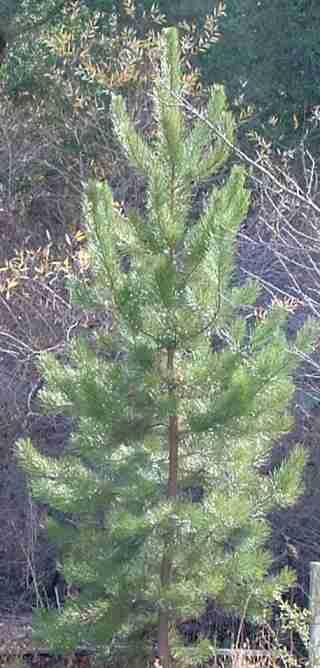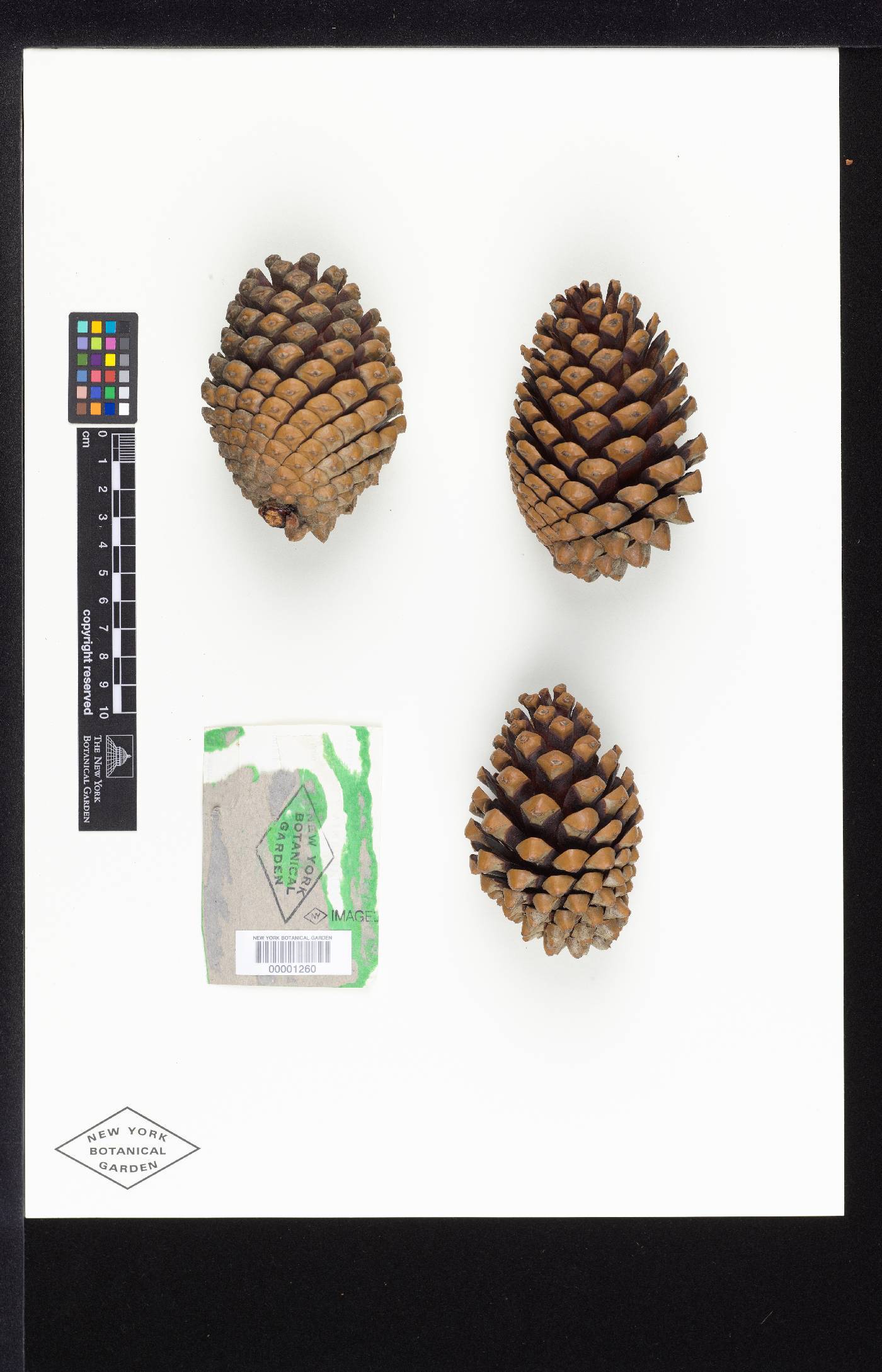Pinus × attenuradiata, as described in 1946 by William Palmer Stockwell (1898-1950) and Francis Irving Righter (1897 - ?), in Madroño 8(5), is commonly known as KMX pine. The species name is an amalgam of the two parent species and the common name stands for "Knobcone-Monterey-Cross (X)." It is a deliberate hybrid of Knobcone pine (Pinus attenuata) and Monterey pine (Pinus radiata), that also occurs naturally at Año Nuevo Point, California.
Description. KMX pine is an evergreen, coniferous species of tree that grows to mature heights of 80 feet (25 m) or more with a straight trunk up to 28 inches (70 cm) in diameter, measured at breast height. Hybrid vigor is definitely displayed with this conifer; as it is one of fastest-growing pines in cultivation. It grows with the tall straight trunk of P. radiata and the spindly, rambling branch structure of P. attenuata.
- Bark will eventually become rough, as seen in Knobcone pine, particularly toward the lower trunk, but this is somewhat delayed.
- Twigs are reddish brown and hairless, resembling both parents.
- Foliar buds are less resinous than both parents, but are of similar size and structure.
- Leaves (needles) are similar to the parent trees, but a little more flexible and droopy due to being somewhat thinner at 0.044 to 0.048 inch (1.1 - 1.2 mm) as compared to the parents' at 0.052 to 0.072 inch (1.3 to 1.8 mm). Needle color is darker, dusty green.
- Pollen cones resemble both parent species at 0.4 to 0.6 inch (10 - 15 mm) long and pinkish brown in color.
- Seed cones are asymmetrically shaped and are superficially more similar to P. attenuata. Like both parents, they measure circa 4.4 inches (11 cm) long, but more slender than the seed cones of P. radiata. The lower seed scales on the hybrid's outer side of the more pointy, conical projections like those seen in Knobcone pine rather than the more rounded dome-like scales of Monterey pine. Cones are somewhat straighter than typically seen on Knobcone pine, and they also remain closed and are retained for many years on the tree.
KMX pine was first developed in 1927 and was the first synthetic hybrid created by the US Forest Service's Institute of Forest Genetics at Placerville, California. It represents one of the best opportunities in terms of forestry potential because of its rapid growth and good form seen in Monterey pine combined with improved cold and drought tolerance found in Knobcone pine.
In addition to natural occurrence in California, KMX pine has also occurred spontaneously in New Zealand and other southern-hemisphere countries where both parent trees have been introduced for the timber industry.
Hardy to USDA Zone 6 - cold hardiness limit between -10° and 0°F (-23.2° and -17.8°C).


